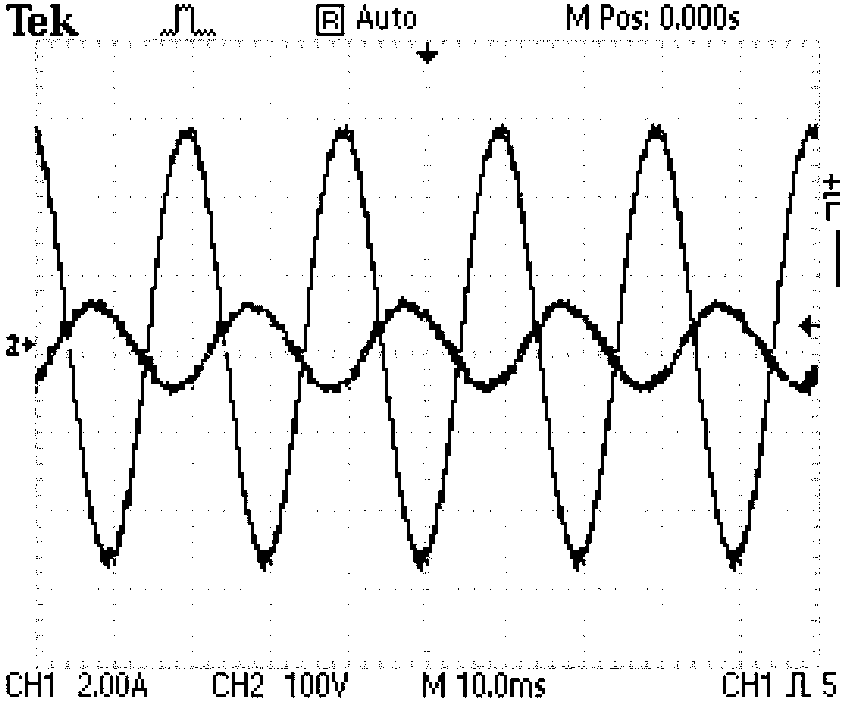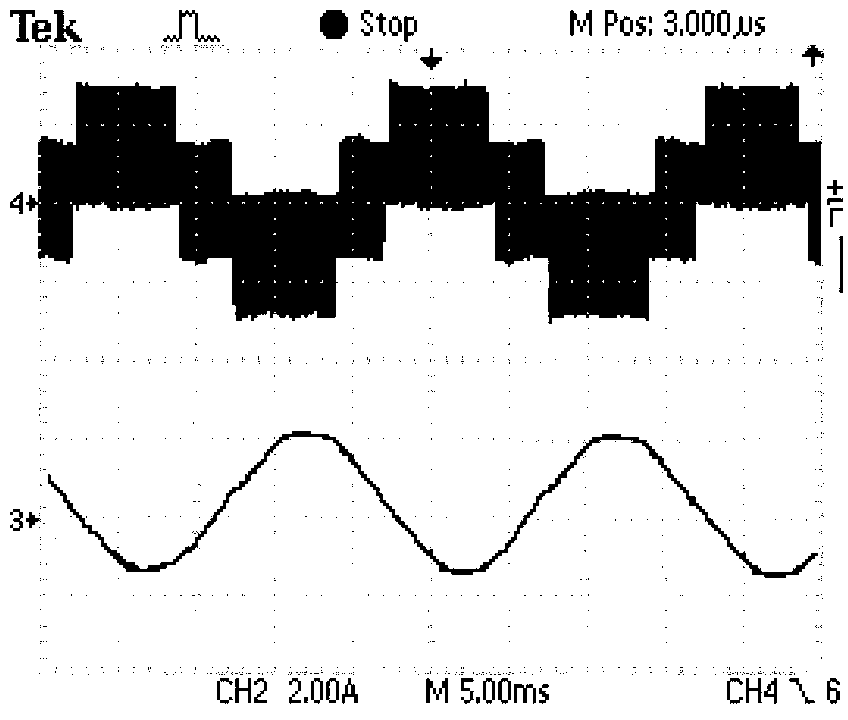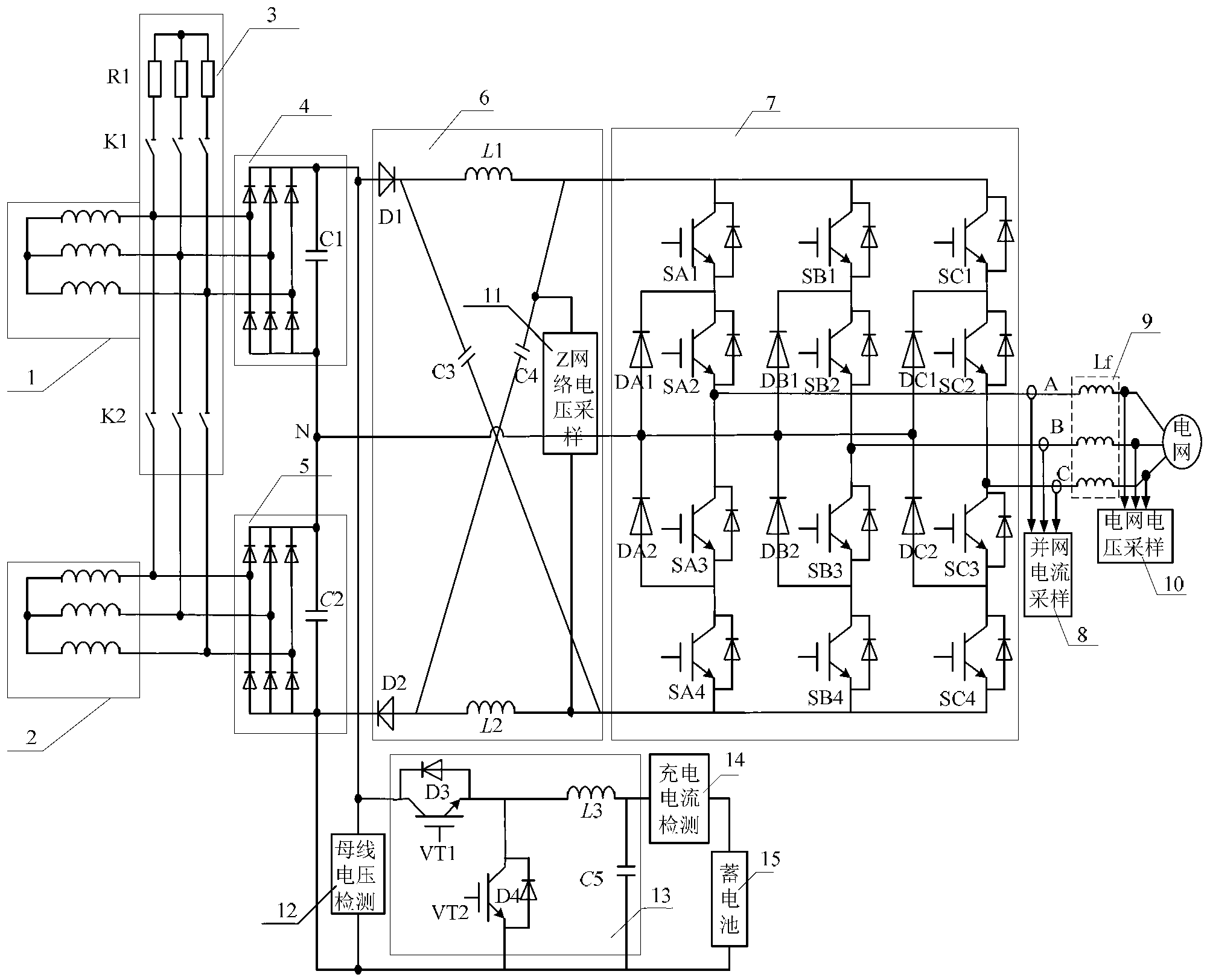Three-level Z source wind power generation grid-connected system
A wind power generator, three-level technology, applied in wind power generation, battery circuit devices, collectors, etc., can solve the problems of low utilization rate of wind energy, and achieve the effects of improving efficiency, strong anti-misconduction ability, and reducing volume
- Summary
- Abstract
- Description
- Claims
- Application Information
AI Technical Summary
Problems solved by technology
Method used
Image
Examples
specific Embodiment approach 1
[0026] Specific implementation mode 1: In this implementation mode, the wind speed is detected by the anemometer, and the bus voltage is detected by the DC bus voltage sampling unit. dcmin dc dcmax ), the power switch tube VT in the bidirectional DC / DC converter 1 , VT 2 Keep it off, the AC power generated by the wind turbine is rectified and used as the input of the Z-source inverter, and the voltage is boosted by the inverter, and the output power frequency AC is connected to the grid. The specific implementation process is as figure 2 As shown, the grid voltage sampling unit detects the grid voltage, uses the software phase-locked loop to obtain the synchronization information θ, and obtains d, q-axis voltage components after coordinate transformation, and obtains d, q after calculating with the given values of active power and reactive power axis current given value; the grid-connected current sampling unit detects the grid-connected input current, and obtains the act...
specific Embodiment approach 2
[0028] Specific embodiment two: In this embodiment, the wind speed is detected by the anemometer, and the DC bus voltage sampling unit detects the bus voltage. When V dcmax dc And 11m / s1 Normal work, VT 2 constant cut-off, by an antiparallel diode D 4 A freewheeling channel is provided, and the bidirectional DC / DC converter works in step-down chopper mode. Part of the electric energy converted from wind energy is used for grid connection, and part of it is used for charging and storing the battery. VT 1 The pulse drive signal is generated by the PWM_DC / DC module in the FPGA, and is input to the VT through the isolated drive 2 module 1 . The Z-source inverter works in the grid-connected mode, and the specific process is shown in Embodiment 1. The charging voltage and charging current of a single lead-acid battery are as follows: Figure 6 shown.
specific Embodiment approach 3
[0029] Specific Embodiment Three: In this embodiment, the wind speed is detected by an anemometer. When the wind speed is in the range of 3 to 6 m / s, the power switch tube VT in the bidirectional DC / DC converter 1 Constant cut-off, VT 2 normal operation by the antiparallel diode D 3 A freewheeling channel is provided, and the bidirectional DC / DC converter works in boost chopper mode. At this time, after the bidirectional DC / DC step-up and chopping, the battery pack is used as the DC source of the Z-source inverter, and after step-up and inversion, it is connected to the grid and outputs power-frequency alternating current.
[0030] It should be noted that when the bidirectional DC / DC converter is working (especially in boost chopper mode), the DC bus voltage will be clamped by the battery chopper boost potential, which does not reflect the rectified AC power generated by the wind turbine. the actual voltage size. By measuring the wind speed, judge the actual wind energy sit...
PUM
 Login to View More
Login to View More Abstract
Description
Claims
Application Information
 Login to View More
Login to View More - R&D
- Intellectual Property
- Life Sciences
- Materials
- Tech Scout
- Unparalleled Data Quality
- Higher Quality Content
- 60% Fewer Hallucinations
Browse by: Latest US Patents, China's latest patents, Technical Efficacy Thesaurus, Application Domain, Technology Topic, Popular Technical Reports.
© 2025 PatSnap. All rights reserved.Legal|Privacy policy|Modern Slavery Act Transparency Statement|Sitemap|About US| Contact US: help@patsnap.com



